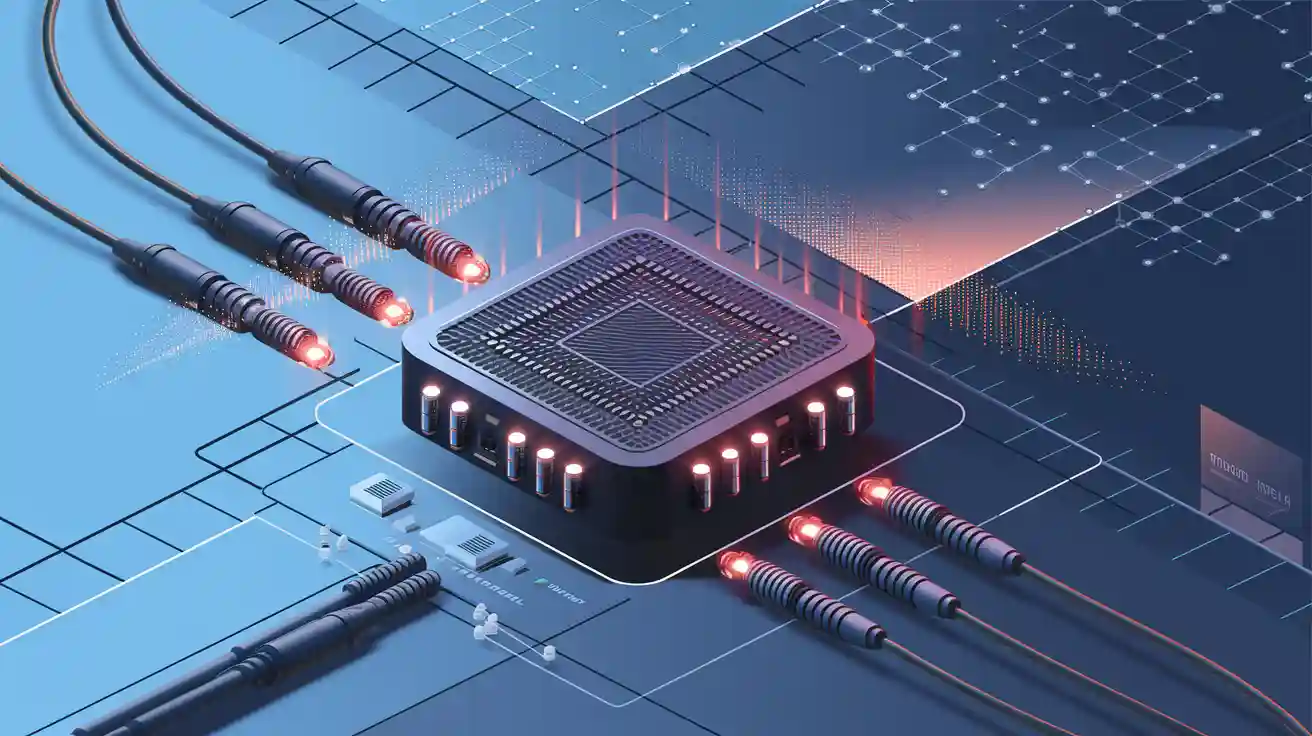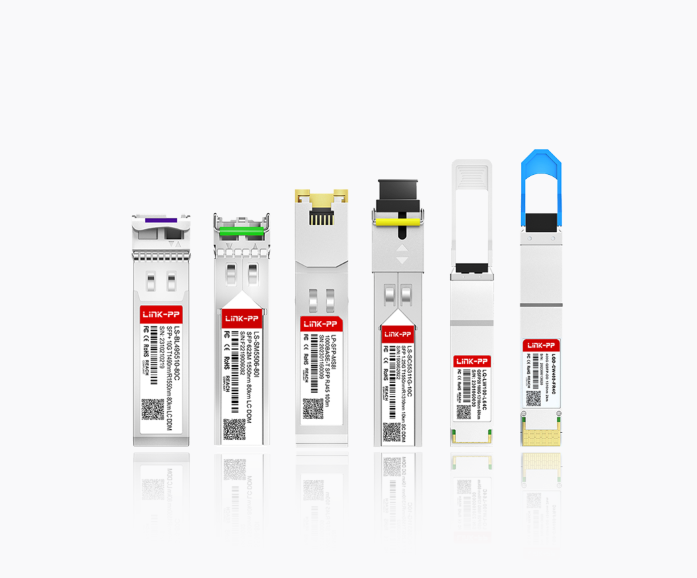
When it comes to optical devices, the right packaging technology can make all the difference. COB, BOX, and TO-CAN packaging each offer unique advantages tailored to specific applications. COB packaging integrates components directly onto a PCB, enabling miniaturization and cost efficiency. BOX packaging seals optical chips in a metal enclosure with inert gas, ensuring long-term stability for high-performance transceivers. TO-CAN packaging, originating from the semiconductor industry, provides a compact and cost-effective solution, ideal for small optical modules.
Packaging impacts more than just size. It determines thermal performance, reliability, and cost. For instance:
Hermetic sealing ensures durability in harsh environments.
Non-hermetic designs reduce costs in controlled conditions.
Advanced packaging supports multi-channel optical transceivers for high-speed data rates.
Understanding these technologies allows you to optimize optical device performance while balancing cost and reliability.
Key Takeaways
COB packaging connects optical parts directly to a circuit board. This improves speed and lowers costs for fast optical devices.
BOX packaging seals tightly to keep parts safe in tough conditions. It works well for strong and reliable optical systems.
TO-CAN packaging is small and cheap, great for lasers and light sensors where space and money matter.
Pick the right packaging based on your needs: COB for small size, BOX for strength, and TO-CAN for saving money.
Knowing these packaging types helps make optical devices work better while staying affordable and dependable.
Overview of COB, BOX, and TO-CAN Packaging
COB Packaging Technology Explained
COB packaging technology stands out for its ability to integrate optical components directly onto a printed circuit board (PCB). This method uses epoxy resin adhesive to attach chips to the PCB, followed by wire bonding for electrical connections. The chip is then sealed with epoxy or silicone resin, ensuring protection and durability. COB packaging is widely used in high-speed telecommunications, including 25G, 40G, and 100G optical transceivers.
This technology offers several advantages. It enables smaller form factors and higher density, making it ideal for compact optical modules. Automation capabilities further enhance its cost-effectiveness, aligning with the growing demand for efficient packaging solutions in the optical transceiver market. As data centers expand, COB packaging plays a crucial role in meeting the need for high-speed, multimode transceivers.
BOX Packaging for Optical Devices
BOX packaging provides a robust solution for optical devices requiring long-term stability. This method involves sealing optical chips in a metal enclosure filled with inert gas. The hermetic sealing ensures protection against environmental factors like moisture and dust, making it ideal for high-performance transceivers.
BOX packaging is particularly beneficial for modular optical systems. Its design supports multi-channel optical transceivers, enabling high-speed data rates while maintaining reliability. As the optical transceiver market grows, BOX packaging technology continues to gain traction due to its ability to meet the evolving demands of data centers and telecommunications networks.
TO-CAN Packaging and Its Role in Optics
TO-CAN packaging offers a compact and cost-effective solution for optical devices. This technology originated in the semiconductor industry and has since been adapted for optical applications. It is commonly used in laser and photodiode modules, where size and cost are critical factors.
TO-CAN packaging remains a preferred choice for applications requiring compact designs and cost efficiency. Its role in optimizing optical device functionalities highlights its importance in the industry.
Key Features and Benefits of COB, BOX, and TO-CAN Packaging
Advantages of COB Packaging
COB (chip-on-board) packaging offers several advantages that make it a preferred choice for high-speed optical devices. By directly attaching optical components to a PCB, this technology enhances both efficiency and performance. You benefit from improved signal integrity because COB minimizes impedance discontinuities through direct connections between the laser and the PCB. This design also reduces the need for additional components, enabling compact and high-density optical modules.
Cost savings are another significant advantage. COB packaging eliminates several components and process steps found in traditional methods, making it a cost-effective solution for large-scale production. Its compact nature supports the growing demand for smaller, more efficient optical interconnects in data centers and telecommunications networks.
Key Benefits of COB Packaging:
Enhances signal integrity for better optical performance.
Reduces the number of components, enabling efficient designs.
Lowers manufacturing costs by simplifying the assembly process.
Benefits of BOX Packaging
BOX packaging stands out for its ability to protect optical components in demanding environments. This technology uses a hermetically sealed metal enclosure filled with inert gas, ensuring long-term stability and reliability. It is particularly effective in high-performance optical systems where environmental factors like moisture and dust can degrade performance.
The integration of optics and electronics in BOX packaging also supports co-packaged optics (CPO), a cutting-edge approach to optical interconnects. CPO enhances bandwidth density, reduces power consumption, and provides a scalable solution for future network demands.
Benefit | Description |
|---|---|
Bandwidth Density | Co-packaged optics (CPO) enhances interconnect bandwidth by integrating optics and electronics. |
Energy Efficiency | Early implementations show 30-50% reductions in power consumption compared to traditional optics. |
Scalability | CPO provides a scalable path for future network demands as data rates exceed 800G and 1.6T. |
Reduced Signal Degradation | Integration of optics with silicon reduces signal loss and power loss in high-performance networks. |
BOX packaging ensures that your optical systems remain reliable and efficient, even as data rates and network demands increase.
Features of TO-CAN Packaging
TO-CAN packaging combines compactness and cost efficiency, making it ideal for applications like laser and photodiode modules. Its cylindrical metal can design provides robust protection for optical components while maintaining a small footprint. This packaging is particularly useful in scenarios where space and budget constraints are critical.
Over the years, TO-CAN packaging has evolved to support advanced optical technologies. For example, it has been used in tunable laser transmitters and coherent transceivers, demonstrating its versatility in high-performance optical networks. Its ability to integrate transmitting and receiving functions in a single package further highlights its value in optical device design.
TO-CAN packaging remains a reliable choice for applications requiring compact designs without compromising on performance. Its cost-effective nature ensures that you can achieve high-quality results while staying within budget.
Comparison of COB, BOX, and TO-CAN Packaging
Cost and Manufacturing Efficiency
Packaging Type | Cost Efficiency | Manufacturing Process | Best For |
|---|---|---|---|
COB | Most affordable | Direct PCB integration; automation-friendly | High-volume, cost-sensitive production |
BOX | Higher cost | Hermetic sealing, inert gas environment | High-reliability, long-term applications |
TO-CAN | Balanced cost-performance | Compact metal can design; simplified assembly | Budget-constrained, compact applications |
Reliability and Thermal Performance
Packaging Type | Reliability | Thermal Performance | Key Feature |
|---|---|---|---|
COB | Moderate (epoxy resin sealing) | Limited heat dissipation | Suitable for controlled environments |
BOX | High (hermetic sealing, inert gas) | Excellent heat dissipation (metal enclosure) | Harsh environments, high data rates |
TO-CAN | Robust (metal can protection) | Application-dependent | Compact designs with physical durability |
Size and Space Considerations
Packaging Type | Footprint | Design Flexibility | Ideal Applications |
|---|---|---|---|
COB | Ultra-compact | High-density PCB integration | Miniaturized optical modules (e.g., data centers) |
BOX | Larger | Modular, scalable for multi-channel systems | High-performance transceivers (e.g., CPO) |
TO-CAN | Smallest (cylindrical can) | Space-constrained designs | Laser/photodiode modules, consumer tech |
Application-Specific Suitability
Packaging Type | Primary Use Cases | Strengths | Limitations |
|---|---|---|---|
COB | High-speed transceivers (25G–100G) | Miniaturization, cost efficiency | Limited thermal management |
BOX | Harsh environments, CPO (800G/1.6T) | Extreme reliability, multi-channel support | Higher cost, bulkier design |
TO-CAN | Compact lasers, photodiodes, consumer tech | Budget-friendly, durable, small footprint | Less scalable for high-density systems |
Summary Table for Quick Reference
Criteria | COB | BOX | TO-CAN |
|---|---|---|---|
Cost | Lowest | Highest | Mid-range |
Reliability | Moderate | Highest | High |
Thermal Performance | Limited | Best | Application-dependent |
Size | Ultra-compact | Largest | Smallest |
Best Applications | Data centers, telecom | CPO, harsh environments | Consumer tech, compact modules |
Making the Right Choice
Selecting the right packaging depends on your application’s specific needs. COB packaging suits high-speed, high-density modules. BOX packaging excels in reliability and environmental protection. TO-CAN packaging offers compactness and cost efficiency. By aligning your choice with your project’s requirements, you can optimize performance, reduce costs, and ensure long-term success.
Practical Applications of COB, BOX, and TO-CAN Packaging
COB Packaging in High-Speed Optical Transceivers
COB packaging plays a vital role in high-speed optical transceivers, especially in environments where performance and compactness are critical. By integrating optical components directly onto a printed circuit board, COB technology enables smaller form factors and higher integration. This makes it an excellent choice for data centers and telecommunications networks that demand efficient and reliable solutions.
For example, LINK-PP's 800G OSFP 2xDR4 optical transceiver module utilizes COB technology to achieve a compact design and high integration. This module supports the growing demands of cloud computing and big data by offering enhanced transmission rates and reduced power consumption. Its smaller size also simplifies deployment, making it easier to scale operations in high-speed networks.
BOX Packaging in Modular Optical Systems
BOX packaging excels in modular optical systems where durability and scalability are essential. Its hermetically sealed metal enclosure protects sensitive components from environmental factors like moisture and dust. This ensures long-term stability, even in harsh conditions.
In modular systems, BOX packaging supports multi-channel optical transceivers, enabling high data rates without compromising reliability. For instance, co-packaged optics (CPO) integrated into BOX packaging can handle bandwidth-intensive applications such as 800G and 1.6T networks. This makes it a future-proof solution for optical systems that need to adapt to increasing data demands.
You can rely on BOX packaging for applications that require robust protection and high performance. Its modular design also allows for easy upgrades, making it a practical choice for systems that need to evolve with technological advancements.
TO-CAN Packaging in Laser and Photodiode Applications
TO-CAN packaging is a practical solution for laser and photodiode applications where size and cost are critical factors. Its cylindrical metal can design provides robust protection for optical components while maintaining a small footprint. This makes it ideal for compact devices and consumer electronics.
Over the years, TO-CAN packaging has proven its versatility in advanced optical technologies. It has been used in tunable laser transmitters and coherent transceivers, demonstrating its ability to support high-performance optical networks. Its simplicity and cost-effectiveness make it a reliable choice for projects with tight budgets or limited space.
If you are developing laser or photodiode modules, TO-CAN packaging offers a balance between performance and affordability. Its compact design ensures that you can achieve high-quality results without exceeding your budget.
Why Choose LINK-PP
As a leader in optical communication solutions, LINK-PP combines COB, BOX, and TO-CAN technologies to address diverse market needs. Their 400G ZR+ coherent optical transceivers, for instance, integrate COB for compactness and BOX for reliability, enabling high-performance metro networks. Meanwhile, their TO-CAN-based 10G SFP+ modules offer a budget-friendly option for enterprise upgrades.
For engineers sourcing durable optical transceiver solutions, LINK-PP’s hybrid packaging approach ensures optimal balance between performance, cost, and environmental resilience.
Conclusion
Understanding the differences between COB, BOX, and TO-CAN packaging helps you make informed decisions for your optical devices. COB packaging excels in compact designs and high-speed connections, making it ideal for data centers. BOX packaging offers unmatched reliability and stability, especially in harsh environments. TO-CAN packaging provides a cost-effective solution for compact modules like lasers and photodiodes.
To choose the right packaging, consider your application’s priorities. If you need high-density integration, COB packaging is the best fit. For durability and long-term stability, BOX packaging is the way to go. When budget and size are critical, TO-CAN packaging delivers excellent results.
Packaging plays a vital role in improving performance and reducing costs. By aligning your choice with your project’s needs, you can ensure reliable connections and long-term success.
FAQ
Why is BOX packaging preferred for telecom-grade optical modules?
BOX packaging provides hermetic sealing, protecting components from moisture and dust. This ensures long-term stability and reliability, which are essential for telecom-grade optical modules operating in demanding environments. Its modular design also supports co-packaged optics technology for future scalability.
Can TO-CAN packaging support high-speed data transmission?
Yes, TO-CAN packaging supports high-speed data transmission in compact devices like laser and photodiode modules. Its cylindrical design ensures robust protection while maintaining performance, making it suitable for applications requiring small, cost-efficient optical modules.
What makes COB packaging ideal for data center optical modules?
COB packaging integrates components directly onto a PCB, enabling smaller form factors and higher density. This makes it perfect for data center optical modules, where space and efficiency are critical. It also supports automation, reducing costs in large-scale production.
See Also
Exploring TOSA's Role and Significance in Optical Modules
The Importance of Digital Monitoring in Optical Transceivers Explained
An Overview of ROSA in Optical Module Technology




